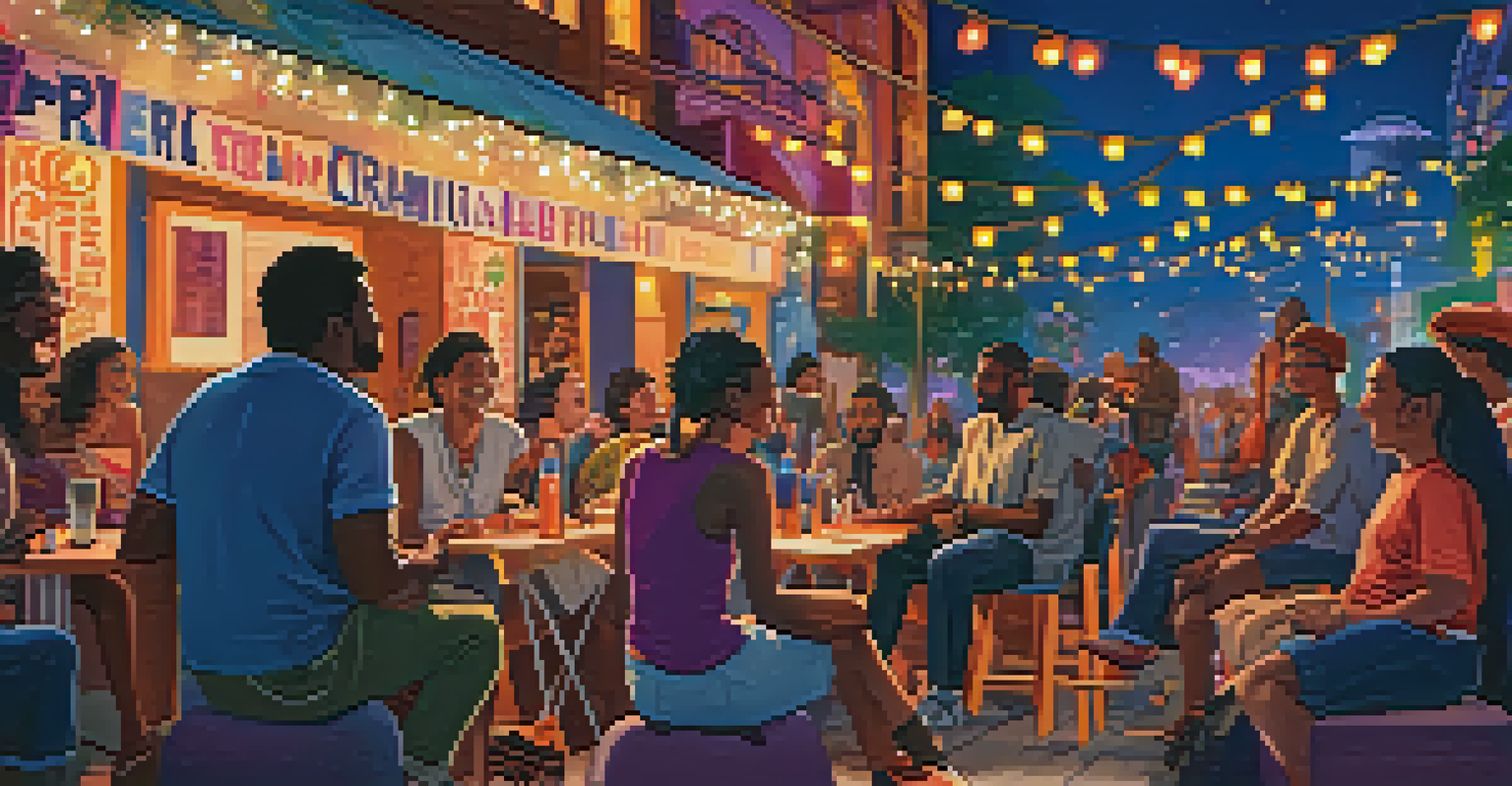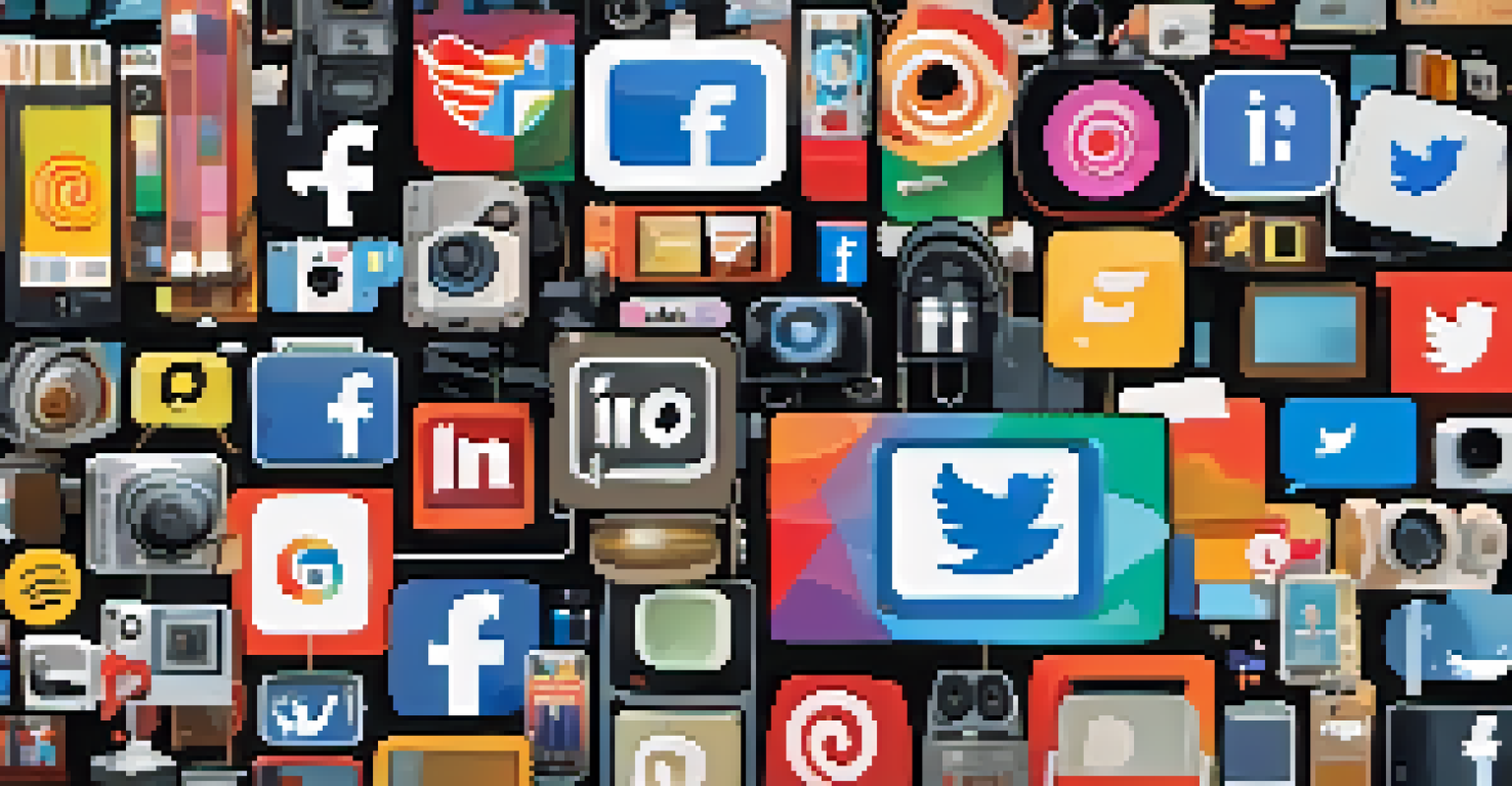Film Criticism in the Age of Influencers and Bloggers

The Evolution of Film Criticism in the Digital Age
Film criticism has transformed dramatically over the years, especially with the rise of the internet. Traditional critics once held the keys to film reviews, but now anyone with a camera and a social media account can share their opinions. This democratization of film criticism means a broader range of voices and perspectives are now available, enriching the conversation. However, it also raises questions about the quality and reliability of these new critics.
Film criticism is not just a reflection of the films themselves, but a mirror of the culture that surrounds them.
With the click of a button, bloggers and influencers can reach thousands or even millions of viewers, often faster than established critics. This speed can create a culture of immediacy, where opinions are formed and shared before a film has even had a chance to settle. While this can be exciting, it sometimes leads to superficial analysis, with hot takes overshadowing thoughtful critique. The challenge is finding depth in a sea of quick responses.
As audiences increasingly turn to influencers for recommendations, the role of traditional critics is being redefined. Some critics are adapting by engaging with social media and expanding their platforms, while others are concerned about losing their authority. This shift highlights the need for critics to balance their expertise with the evolving landscape of film commentary.
The Rise of Influencers and Their Impact on Film Culture
Influencers have become powerful players in the film industry, often shaping public perception and box office success. With their immense following, they can sway opinions and create buzz around a film, sometimes before it even premieres. This power has led to collaborations between studios and influencers, where promotional efforts blur the lines between genuine critique and marketing. As a result, audiences may find it challenging to discern unbiased reviews from paid endorsements.

The casual, relatable style of influencers can resonate more with some audiences than traditional critics. Many viewers appreciate the approachable nature of an influencer's review, often feeling a personal connection that can enhance their viewing experience. However, this can come at the cost of the in-depth analysis that seasoned critics provide. Audiences must learn to navigate this new landscape and seek out voices that offer both insight and entertainment.
Influencers Redefine Film Criticism
The rise of influencers has transformed film criticism, offering relatable insights while challenging traditional critics' authority.
Moreover, the influencer phenomenon raises important questions about credibility and expertise. While influencers may excel in marketing and engagement, their lack of formal training in film analysis can sometimes lead to less informed opinions. This scenario underscores the importance of critical thinking for audiences who want to make informed choices about the films they watch.
The Role of Blogs in Film Criticism Today
Blogs have carved out a unique niche in the world of film criticism, offering diverse perspectives often overlooked by mainstream outlets. They provide platforms for emerging writers and passionate cinephiles to express their thoughts on films, fostering a community of like-minded individuals. This grassroots approach often leads to more personal and nuanced reviews, which can resonate deeply with readers. However, the informal nature of blogs can sometimes lead to a lack of accountability.
In the digital age, everyone is a critic, but the challenge is finding the voices that truly matter.
Many successful blogs focus on specific genres, themes, or styles, catering to niche audiences. This specialization allows for in-depth exploration of topics that mainstream critics may gloss over. For instance, a blog dedicated to horror films might analyze cultural implications and subtext in ways that broader outlets can't. This specialized content can enrich the overall film discourse, giving voice to lesser-known films and filmmakers.
Despite their strengths, blogs often struggle with visibility in a saturated market. The challenge lies in gaining traction amid the noise of social media and influencer content. Building a loyal audience takes time and effort, but the rewards can be significant. When readers find a blog that resonates with them, it can lead to lasting engagement and community building.
Navigating the Fine Line Between Promotion and Critique
As influencers and bloggers often collaborate with film studios, the boundary between promotion and critique becomes increasingly blurred. While these partnerships can lead to greater exposure for films, they also raise ethical questions about the integrity of reviews. Audiences must be wary of potential biases, particularly when an influencer is promoting a film they were compensated to endorse. Transparency is essential for maintaining trust between reviewers and their audiences.
The challenge for influencers and bloggers is to uphold ethical standards while still engaging with brands. Many strive to provide honest feedback, even when they are part of promotional campaigns. However, the pressure to create content quickly can sometimes compromise the depth of their analysis. It's crucial for content creators to find a balance that honors their audience's intelligence while still respecting the filmmakers' efforts.
Blogs Offer Unique Perspectives
Film blogs provide diverse and nuanced viewpoints often overlooked by mainstream critics, fostering community engagement.
For audiences, this means being discerning consumers of film content. Critical thinking skills become paramount in evaluating the authenticity of reviews. By recognizing potential biases and seeking diverse opinions, viewers can better navigate the complex landscape of film criticism today.
The Importance of Diverse Voices in Film Criticism
Diversity in film criticism is more important than ever, as it reflects the wide range of perspectives found in cinema itself. Influencers and bloggers from various backgrounds can bring unique insights that enrich the conversation around films. This diversity can challenge mainstream narratives and highlight stories that may not receive as much attention elsewhere. The result is a more inclusive film discourse that better represents the audience's varied experiences.
Many new critics are using their platforms to advocate for underrepresented voices in Hollywood, showcasing films that highlight different cultures and experiences. This advocacy is vital in a landscape that has historically marginalized certain groups. By amplifying these voices, the film community can foster a broader understanding of the art form and its impact on society. The ripple effect can lead to increased visibility for diverse filmmakers and stories.
However, achieving true diversity in film criticism requires ongoing effort and commitment from both creators and audiences. Encouraging diverse perspectives is not just about representation; it's also about recognizing the value that these voices bring to the conversation. By supporting critics who challenge the status quo, audiences can help shape a more equitable film industry.
Adapting to Change: How Traditional Critics are Evolving
With the rise of influencers and bloggers, traditional film critics are finding new ways to adapt and remain relevant. Many are embracing social media, using platforms like Twitter and Instagram to engage with audiences directly. This shift allows critics to share their insights in real-time, fostering a sense of community around film discussions. By blending traditional critique with modern platforms, they can reach a wider audience and stay connected to film lovers.
Additionally, some critics are expanding their content formats, producing video essays or podcasts that appeal to a broader range of viewers. These formats can provide a more dynamic way to explore films, blending visuals and commentary to enhance understanding. By embracing these innovative approaches, traditional critics can compete with the immediacy and accessibility of influencer content while maintaining their analytical depth.
Diversity Enhances Film Discourse
Incorporating diverse voices in film criticism enriches the conversation and promotes underrepresented stories in cinema.
Ultimately, the adaptation process is about finding the right balance between expertise and engagement. Traditional critics must continue to uphold their standards while also learning to communicate their insights in ways that resonate with today's audiences. This evolution is not just about survival; it's about enriching the film conversation for everyone involved.
Looking Ahead: The Future of Film Criticism
As we look to the future, the landscape of film criticism will likely continue to evolve alongside technology and social media. The rise of artificial intelligence and data analytics could impact how films are reviewed and promoted. For example, AI might help identify trends in audience preferences, influencing how critics approach their analyses. While this technology holds potential, it also raises questions about the authenticity of human perspectives.
Moreover, the increasing prominence of streaming platforms is changing how films are consumed and critiqued. With a vast array of content available at our fingertips, audiences face the challenge of sifting through options to find quality films. This shift presents both opportunities and challenges for critics, as they must navigate a landscape where attention is the currency. Finding new ways to engage and inform viewers will be essential.

Ultimately, the future of film criticism will depend on its ability to adapt, innovate, and remain relevant in a rapidly changing world. By fostering collaboration between traditional critics, influencers, and bloggers, we can create a richer dialogue that enhances the film-watching experience. Embracing diverse voices and perspectives will ensure that film criticism continues to thrive, reflecting the dynamic nature of cinema itself.